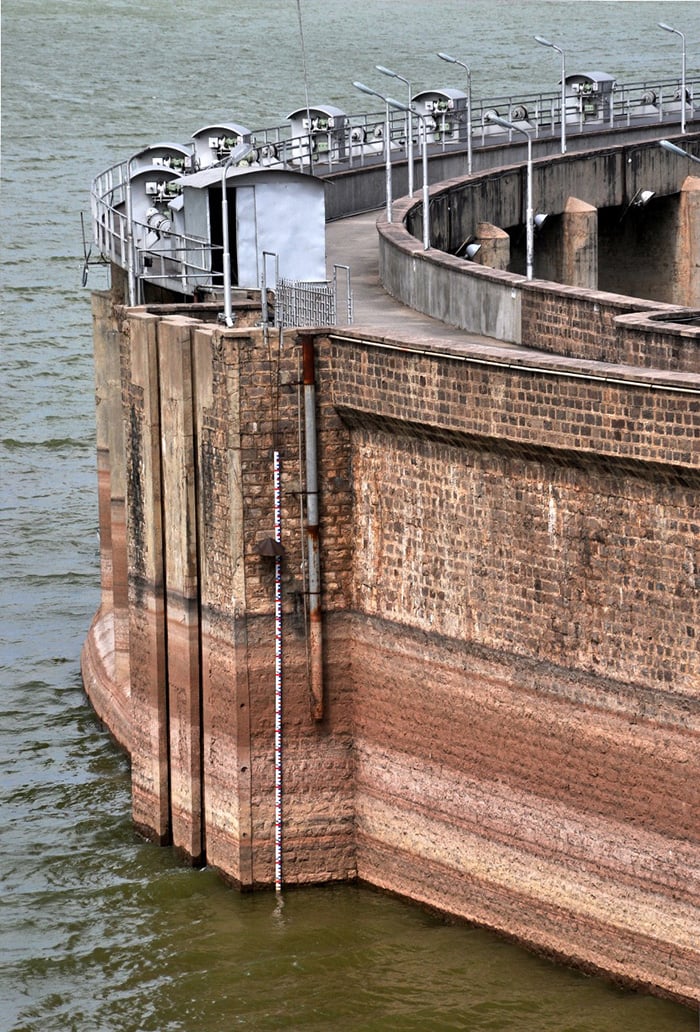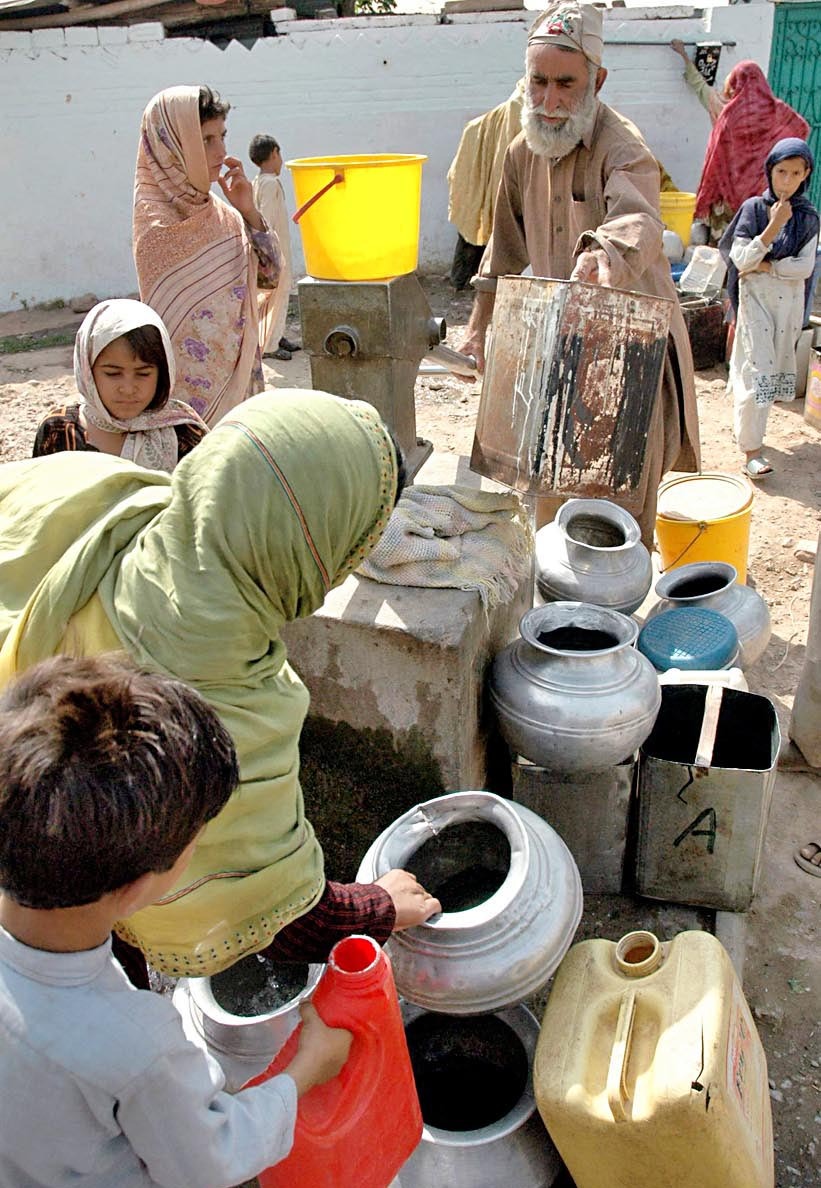Islamabad’s aquifers, an underground layer of water-bearing rocks, are depleting fast. There is, of course, no single reason for the imminent water woes. But the largest contributor is the changing climate.
Water demand in the city of over two million people is close to 110 million gallons per day. That is double the supply being provided to it right now, say officials at the Capital Development Authority (CDA), which is responsible for municipal services in Islamabad.
“The city draws most of its water from reservoirs behind the Simly and Khanpur dams,” explains Nasir Jameel, the director water at the CDA. Islamabad gets 58 million gallons of water daily, he adds, of which nine million comes from the Khanpur Dam, 24 million from Simly Dam, 24 million from local tubewells and the remaining one million is channelled from waterworks that include Shahdara, Korang, Noorpur and Saidpur.
Officials at the CDA blame climate change, an outdated water supply system and an unaccounted usage of water for the depletion.
In recent months, the Simly Dam, one of the main sources of water for the capital, has seen its storage capacity fall rapidly. Additionally, 25 tubewells have dried up.
Just five years ago, water could be found by boring only 50 feet deep. Today, wells have to be dug to more than 100 feet to draw out water. According to the Pakistan Council of Research in Water Resources (PCRWR) water now found at 50 feet is no longer fit for consumption. In some areas of the city, water can only be found at 250-300 feet.
Dr Tariq Fazal Chaudhary, the previous state minister for Capital Administration Department Division, which overlooks education, health, population and welfare of the city, cites a 1990 report prepared by the Japan International Cooperation Agency which stated that Islamabad’s water basin was not sufficient to provide water to 30 sectors including C-13 to C-16, D-11 to D16, E-7, E-8, E-9, E-15, E-16, F-5, F-15, F-16, H-11 to H-16 and I-11 to I-16.
Residents of the city are faced with a water shortage every summer, particularly those living in sectors I-9, I-10, G-13 and G-14.
Furthermore, people also need to be made aware of the water crisis, insist officials. “The CDA was forced to cut the water supply to homes by 50 per cent,” admits Jameel, “We are waiting on the monsoon rains to increase the storage level.”
The water level at Simly Dam is only 20 feet at the moment. The total storage capacity of the dam is 7,400 million gallons, while the available water in the dam is 1,200 million gallons. “The current demand is high, which is why we want to prolong the usage by supplying less water.”
But in order to ensure that the citizens have enough water for drinking and other basic needs, tankers filled with water are being ferried to homes by the CDA. A single tanker can be purchased for as low as Rs100. “We are also hiring private tankers and providing water for Rs300 per tank,” explains another CDA official, who asked to remain anonymous.
But Imran Mukhtar, a resident of Sector I-10, says that getting a water tank from the civic authority can be a difficult and frustrating task. CDA, he adds, makes citizens wait for hours in a queue, while private tankers charge Rs1,000 for a trip.
So, what is the way out? A decade ago, the CDA had conceived a mega project to bring water from the Indus River via the Tarbela Dam in the Khyber Pakhtunkhwa province. Once completed, the project would have sorted out the water woes of the twin cities of Islamabad and Rawalpindi for at least 15 years. But there has been no progress on the project since due to lack of funds. Still determined, the CDA proposed to the federal government to negotiate with China and have the project included and executed under the China Pakistan Economic Corridor. As per initial estimates, Rs75 billion are required for the project. The federal government could not reach a decision on the matter before it stepped down on May 31.
For now, the residents of Islamabad will have to wait for a new government to be elected and hope that it takes their plight into consideration.




